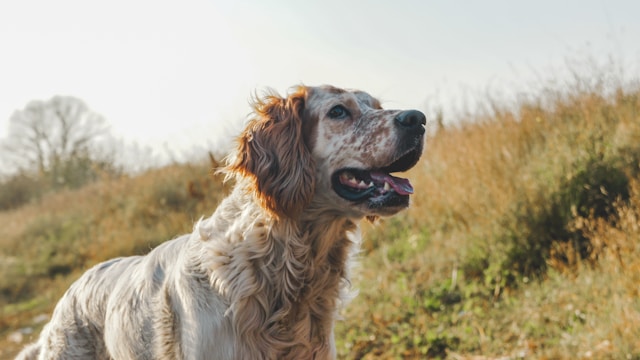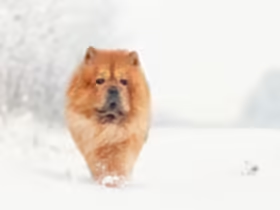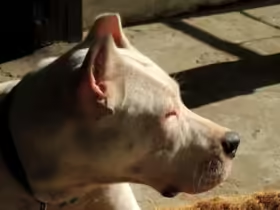Living in a hot weather climate requires special considerations for your canine companion. Certain dog breeds are better suited to handle the heat due to their physical characteristics and coat types. Choosing the right breed can make a significant difference in your dog’s comfort and well-being. In this guide, we’ll explore the best dogs for hot weather climates, their unique traits, and essential tips for keeping your dog cool and safe in the heat.
1. Characteristics of Dogs Suited for Hot Weather
A. Coat Type
- Short-Coated Breeds:
- Dogs with short, thin coats are generally more comfortable in hot weather. Their coats do not insulate as much, allowing for better heat dissipation.
- Breeds with Light Coats:
- Breeds with light-colored coats can reflect sunlight rather than absorb it, helping to keep them cooler.
B. Physical Traits
- Brachycephalic Breeds:
- Brachycephalic breeds (those with flat faces) often struggle with heat due to their compromised breathing. Therefore, these breeds are less suited for hot climates.
- Active and Energetic Breeds:
- Breeds that are accustomed to regular exercise and outdoor activities are more likely to handle heat well if their exercise routines are adapted to cooler parts of the day.
C. Adaptability
- Resilience to Heat:
- Some breeds have evolved to cope with high temperatures and are naturally more resilient to heat stress.
- Hydration and Cooling Needs:
- Dogs that are accustomed to living in hot environments are often better at regulating their body temperature and staying hydrated.
2. Top Dog Breeds for Hot Weather Climates
A. Basenji
- Characteristics:
- Coat: Short, fine coat that is well-suited to hot climates.
- Origin: Native to Central Africa, where they are adapted to warm temperatures.
- Why They’re Great:
- Basenjis have a natural tolerance for heat and are known for their low maintenance coat. They are also highly energetic and enjoy outdoor activities.
B. Chihuahua
- Characteristics:
- Coat: Very short coat, though they can have long coats; still, they generally handle heat well.
- Size: Small size makes them easier to manage in warmer environments.
- Why They’re Great:
- Chihuahuas are small and have a low-to-moderate activity level, which helps them cope with heat better. Their small size makes them adaptable to various living conditions, including hot climates.
C. Dalmatian
- Characteristics:
- Coat: Short coat with a unique spotted pattern.
- Origin: Originally bred as carriage dogs, accustomed to being outdoors in various weather conditions.
- Why They’re Great:
- Dalmatians have a short coat that is not overly insulating, and they are active dogs that enjoy outdoor exercise. They are well-suited to warmer climates when provided with plenty of water and shade.
D. Doberman Pinscher
- Characteristics:
- Coat: Short, sleek coat that helps with heat regulation.
- Build: Athletic and muscular, with high energy levels.
- Why They’re Great:
- Dobermans are strong and active dogs with a short coat that helps them stay cool. They enjoy exercise and are resilient to warm temperatures, provided they have access to water and shade.
E. Italian Greyhound
- Characteristics:
- Coat: Very short, fine coat.
- Size: Small and lightweight, which helps with heat dissipation.
- Why They’re Great:
- Italian Greyhounds are well-suited for warm climates due to their minimal coat and small size. They require less insulation and handle warm temperatures better than many other breeds.
F. Jack Russell Terrier
- Characteristics:
- Coat: Short coat that is less insulating.
- Energy Level: Highly active and energetic.
- Why They’re Great:
- Jack Russells are active and energetic dogs with a short coat. Their high energy level helps them stay healthy in hot climates, provided they have ample opportunities to cool down.
G. Vizsla
- Characteristics:
- Coat: Short, sleek coat that doesn’t retain much heat.
- Build: Athletic and lean, making them more heat-resistant.
- Why They’re Great:
- Vizslas are active and enjoy outdoor activities. Their short coat and lean build make them well-suited to hot climates, as long as they have access to water and shade.
3. Tips for Keeping Your Dog Cool in Hot Weather
A. Hydration
- Fresh Water:
- Ensure your dog always has access to fresh, cool water. Hydration is crucial for preventing heatstroke and maintaining overall health.
- Water Bowls:
- Use spill-proof water bowls for travel and outdoor activities to ensure your dog stays hydrated on the go.
B. Shade and Shelter
- Provide Shade:
- When outdoors, make sure your dog has access to shaded areas where they can escape direct sunlight.
- Cooling Mats:
- Invest in cooling mats or beds that can help regulate your dog’s body temperature.
C. Exercise and Activity
- Avoid Peak Heat:
- Schedule walks and playtime for early morning or late evening when temperatures are cooler.
- Cooling Vests:
- Use cooling vests or wraps during outdoor activities to help lower your dog’s body temperature.
D. Grooming
- Regular Brushing:
- Brush your dog’s coat regularly to remove excess hair and promote air circulation.
- Trimming:
- Some breeds may benefit from a trim to help them stay cooler, but be careful not to shave them too closely, as they need some fur for sun protection.
E. Signs of Heatstroke
- Symptoms:
- Watch for signs of heatstroke, including excessive panting, drooling, lethargy, and vomiting.
- Immediate Action:
- If you suspect heatstroke, move your dog to a cooler area immediately, provide water, and contact your veterinarian for advice.
4. Conclusion
Selecting a dog breed that is well-suited for hot weather climates can enhance both your pet’s comfort and your own enjoyment of the warmer months. Breeds with short coats, high energy levels, and a natural tolerance for heat are generally the best candidates for life in warm environments.
By understanding your dog’s needs and implementing strategies to keep them cool, you can ensure they remain happy and healthy throughout the year. Whether you’re choosing a new canine companion or seeking ways to improve your current dog’s experience in the heat, these tips and breed recommendations will help you make informed decisions and enjoy a pleasant life in warmer climates with your furry friend.











Leave a Reply